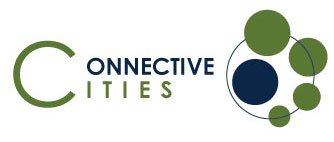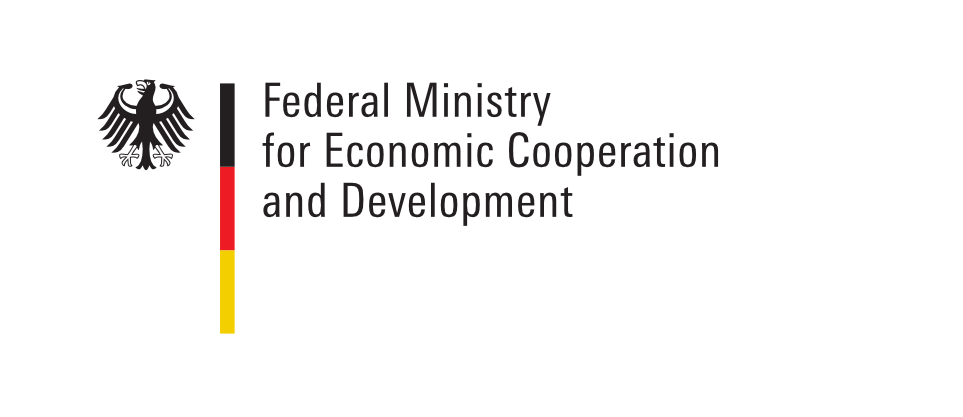- DE |
- EN
Deep Dive: Heat in the City
The Deep Dive celebrated another milestone in the two year long process, with the latest workshop being held in Aswan - Egypt from 21st to 23rd January 2025. The workshop marked the transition from the phase of piloting of solutions towards optimization and upscaling. Participants representing the cities of Nairobi, Aswan, Mombasa, Lüdenscheid, Heidelberg and Lviv (virtually) discussed the results of implementing their pilots. Additionally, participants had the opportunity to learn about projects and initiatives implemented in Aswan governorate that are relevant to sustainable urban development and urban climate action.
Program
The workshop activities were carried out over three days, and included peer advisory activities, presentations and a technical input from Prof. Jürgen Kropp from the Potsdam Institute for Climate Impact Research (PIK) in addition to an excursion in Aswan. A series of peer-to-peer exchanges between the participants who are working in different local conditions was facilitated. During the first day, the participants discussed their key learnings from the implementation of their pilots and elaborated on the measures taken to ensure co-creation with relevant stakeholders and the sustainability of the pilots’ results. Furthermore, a keynote from the deputy governor of Aswan, Mr. Amr Lashin, shed light on efforts to transition towards human-centric urban development in the governorate. The introduction also included a presentation from UDF’s general manager for international cooperation and community participation, Dr. Marwa Soliman, which delved into the role of the Urban Development Fund (UDF) and its numerous projects on integrated urban development and urban climate action.
This was followed on the second day by a series of exercises that guided the participants into identifying areas for optimization in their pilots and methods for upscaling including 1) standardization of design and replication, 2)planning incremental upscaling, 3) financial and human resources allocation, 4) redefining the anticipated risks given the wider scale of implementation, and 5) monitoring of progress including the definition of key performance indicators.
The final day incorporated a session on reflections from the participants on their experiences throughout the implemented stages of the Deep Dive in addition to a hybrid session with Prof. Kropp, who addressed their questions on various technical topics including 1) using artificial intelligence in climate research and devising of solutions, 2) channeling climate finance to implement measures for mitigation of urban heat, 3) existing affordable solutions that are of high impact, 4) cities and local governments position in international climate talks such as the COP29, and 5) building climate-resilient health systems. These topics will be the focus of a series of virtual sessions that will be held in the upcoming months with Prof. Kropp and PIK.
The second half of the final day included an excursion to the selected pilot area in Aswan (East District ‘Elsail Elgadid’), and good practice examples of public spaces (Feryal park, the corniche, the market and the train station plaza) in which elements for improving outdoor thermal comfort were installed.
Results: Piloted solution options
Here is an overview of the pilots and the results shared by the participants:
Mitigating Heat in Schools: Using Temperature Data to Guide Shade-Providing Fruit Tree Planting and Awareness Programs in Nairobi, Kenya
Outdoor temperatures were measured in a selected number of schools. Based on this data, planting of shade-providing fruit trees along with conducting awareness raising sessions for the students and staff in the targeted schools. Students and staff were trained to assist in thermal data collection via the temperature sensors in school yards where trees were planted using sensors provided by the World Resources Institute. Several sessions were held with students, school staff and environmental officers focusing on awareness raising on the phenomenon of urban heat islands and the importance of planting trees to improve the outdoor thermal comfort. Nairobi is also planning to embed a real-time heat map in its website that will be publicly accessible. Besides the sense of ownership created among the schools’ students and staff, assigning the responsibility of regular maintenance to the environmental officers ensures the sustainability of this pilot. Plant shoots and seedlings were acquired via the municipal nursery which helped in reducing costs and ensuring the selection of native species that are drought-resistant. Further financial allocations are secured only upon incorporating the project in the County’s Integrated Development Plan (CIDP).
Cool Urban Oases- Designing Mini-Parks for Heat Reduction and Long-Term Temperature Monitoring in Lviv, Ukraine
Several pocket parks are planned to be created as part of the urban festival City Workshop, where local residents will engage in designing them to improve outdoor thermal comfort. The temperature will be monitored over a longer period of time in order to obtain data on the cooling effects of the measures undertaken. The concept will be implemented as part of the city's environmental management initiatives. The first field trial in Lviv was successfully implemented to mitigate heat islands while applying the principles of design thinking to implement urban initiatives. Nevertheless, several challenges impeded implementation including the existing Martial law, conflicts with residents and missing data, and limited funding. The municipality is planning to create new pocket parks in cooperation with the Department of Ecology and the Urban Workshop Festival in 2025 and to continue its research on the impact of heat islands on the city.
Lüdenscheid has successfully completed the development of its local climate action plan. As part of the Deep Dive, the municipality was assisted in conducting an internal workshop with the participation of all departments, marking a significant leap in the progress of mainstreaming climate action in the different fields of municipal work. Representatives were indeed delegated from the different departments to participate in the activities of the working group. Some measures of the heat action plan were completed, and others are under implementation including: 1) ‘Re-fill’ initiative implemented in partnership with restaurants and shops that will provide water refills to passer-by’s, 2) heat brochure about symptoms of heat stress, and 3) cooling map showing cool places in the city to help guide pedestrians in case of experiencing heat stress. Nevertheless, issues such as limited human and financial resources were among the challenges that impede the engagement of all municipal departments. Revising and amending the landscape and gardening codes by developing a tree charter was also highlighted as a necessary step to be undertaken.
Integrated Heat Action Framework Development in Aswan, Egypt
The Urban Development Fund partnered up with Aswan governorate to channel its institutional knowledge while putting together fragmented parts that will form the base for an Integrated Heat Action Framework in Aswan. The aim was to 1) establish a core working group with the most relevant departments to be involved in the process of developing a heat action plan, and 2) develop the general framework and select a zone for piloting. International experiences showcased and discussed as part of the deep dive were adapted to serve in the local context. Capitalizing on the local native knowledge in Aswan on climate-responsive design and construction methods, the local building codes will be reviewed and modified. The general framework includes measures for 1) adaptation planning and implementation, 2) preparedness, communication, and workers’ safety, 3) built environment, infrastructure, and managed spaces, and 4) ecosystem-based adaptation. Voting for area prioritization and selection was conducted and resulted in choosing “Elsail Elgadida” as a pilot area. Initial needs assessment meetings with local residents revealed a myriad of urban challenges, among which is the lack of safe public spaces. Accordingly, it was suggested to designate one of the districts numerous wide streets to this purpose by converting it into a pedestrian-only area and rehabilitating it with tree planting, shading elements and urban furniture. Local residents expressed their willingness to collaborate by watering the planted trees.
Raising Awareness and Mapping Hotspots of Urban Heat Islands for Stakeholders and Citizens in Mombasa, Kenya
The implemented pilot aimed at raising awareness among stakeholders and citizen on urban heat islands and its effect as well as to mapping urban heat island hotspots in the city. Defining the message that needs to be communicated to different target groups was a challenging task: The risk of exposure to urban heat and its impacts on human wellbeing was the message conveyed to the laypersons and the general public. Meanwhile, the impact of uncontrolled urbanisation on exacerbating urban heat remains a major debate that needs to be addressed with the technical staff in the planning department. Urban forestry department, as well as the education and health departments joined forces to raise awareness in schools on the phenomenon of urban heat. Since 2023, climate change has indeed gained recognition in the local administration, therefore, the responsible staff were enabled to spearhead the topic and prioritise interventions. Nevertheless, it’s still being dealt with as a separate issue without sufficient integration in local development plans. To sustain the pilot’s results, it is necessary to incorporate its measures into the county integrated development plan (CIDP) which well be finalized in 2027, and to select localized solutions that can be embraced by the community.
Green City Climate Database - Informing Urban Open Space Planning in Heidelberg, Germany:
Heidelberg is planning to create a climatological database for all public spaces and outdoor areas. The city is also planning to develop up to three examples of best practice examples for urban heat mitigation in public spaces. These examples will be presented to the city council as a basis for future urban planning activities. The examples include small parks known as “pocket parks”. Main key learnings from implementing the pilot are: 1) seeking best fit local examples rather than ‘general’ best practice, 2) speaking the ‘language’ of your target audience for effective communication and building consensus, 3) compiling evidence to gain approval and enable upscaling, and 4) discussing and resolving issues related to delineation of roles and overlapping responsibilities.
Way forward
Despite the similarities in the challenges faced by the participants in their local contexts, their approach to overcoming these issues varied. Being it weak horizontal communication and integration of the topic of urban heat in municipal plans, or risks arising for change in the political leadership affecting the funding, the participants discovered innovative methods to bypass the bottlenecks that impeded the implementation of their pilots. According to some of their testimonies, belonging to this group of local experts empowered them to taking actions aimed at achieving the goal of mitigation of urban heat risks. Their next step is to optimize the pilots and plan for their upscaling until June 2025.
Presentations
All presented materials can be found on Connective Cities' Community Platform via this link [only for registered members].





















